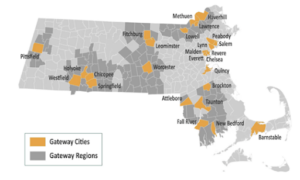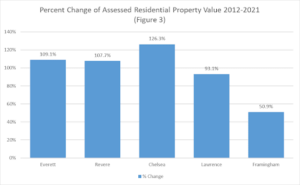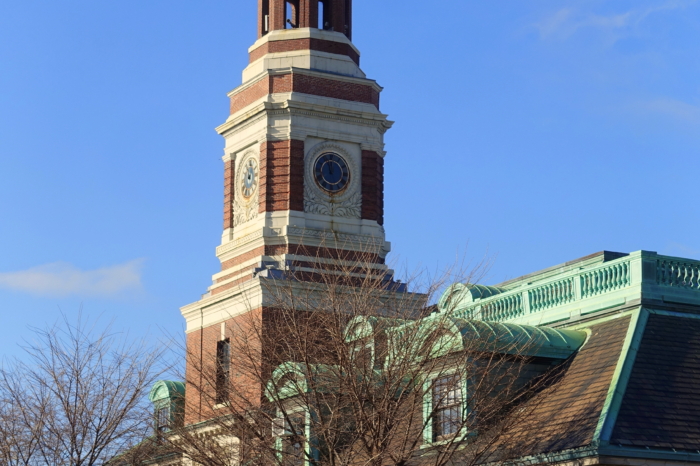HDIP: Unintended Consequences Adding to the Housing Crisis

(Figure 1) Map of Gateway Cities in Massachusetts Source: The Future of Small Cities Institute
The Housing Development Incentive Program, or HDIP, was intended to create more housing for the citizens of Massachusetts, but its results have gone in a different direction. Created in 2010 by former Governor Deval Patrick and other lawmakers, the intent of the program was to subsidize developers to create housing in Gateway Cities.
Gateway Cities are defined by 3 qualities: a population between 35,000 and 250,000, a median household income below the state average, and a rate of bachelor’s degree or higher that is below the state average. Although the subsidy was supposed to support economic growth and diversification in those cities, it has had one major unintended consequence: pricing out residents from their homes.
Luxury Subsidies
Chelsea’s Director for Housing and Community Development, Alexander Train, has seen a disproportionate rise in luxury housing for the typically working class community. According to Mr. Train, “Over the last ten years, there’s been about three times the amount of luxury housing built compared to affordable housing,” Developers aren’t incentivized to build affordable housing because of the lower profitability associated with it. Instead, they build luxury apartments while taking advantage of the HDIPs. People fleeing from Boston’s high housing prices are migrating to these new luxury residences in Gateway Cities, resulting in increased rents in the surrounding areas.

(Figure 2) Chelsea Assessed Property Value (Residential in Green) Source: MassAnalysis
MassAnalysis data affirms this trend in Chelsea, as well as other Gateway cities. From 2012 to 2021, Chelsea experienced a 126 percent increase in assessed residential property value. In that same time period, Everett saw a 109 percent increase, and Revere saw 108 percent increase. The same effects are happening in Gateway Cities further away from Boston, like Lawrence, who saw over a 93 percent increase. Compare that to a city like Framingham, neither a Gateway City nor HDIP eligible, where assessed residential property values only increased 51 percent.

(Figure 3) Percent Change of Assessed Residential Property Value 2012-2021 Source: MassAnalysis
Legislative Change
Governor Maura Healey proposed a change to HDIP in her tax relief bill that is making its way through Beacon Hill. The Governor’s bill quintuples the annual cap on HDIP credits, from $10 million to $50 million, in the first year and then sets the cap at $30 million in subsequent years. The expansion of the HDIP could have the unintended effect of creating more high-priced housing, without providing direct relief to lower-income residents seeking more affordable housing options while also suffocating private investment in the housing market.
Takeaways
Although Governor Healy and the legislature are trying to deal with Massachusetts’s housing crisis in the best way possible, the expansion of the HDIP could put more pressure on an already-burdened working class. Attempts to amend the HDIP to require developing affordable housing have been made, but none have gained much traction. While the HDIP program is one among several factors contributing to rising housing prices, a better understanding of the actual impact the program is having is critical before action is taken to expand the program.
About the Author:
Teddy Wynn is a Roger Perry government transparency intern with the Pioneer Institute. He recently graduated from Hamilton College, earning a Bachelor’s degree in World Politics. Feel free to reach out via email, Linkedin, or write a letter to Pioneer’s Office in Boston.



